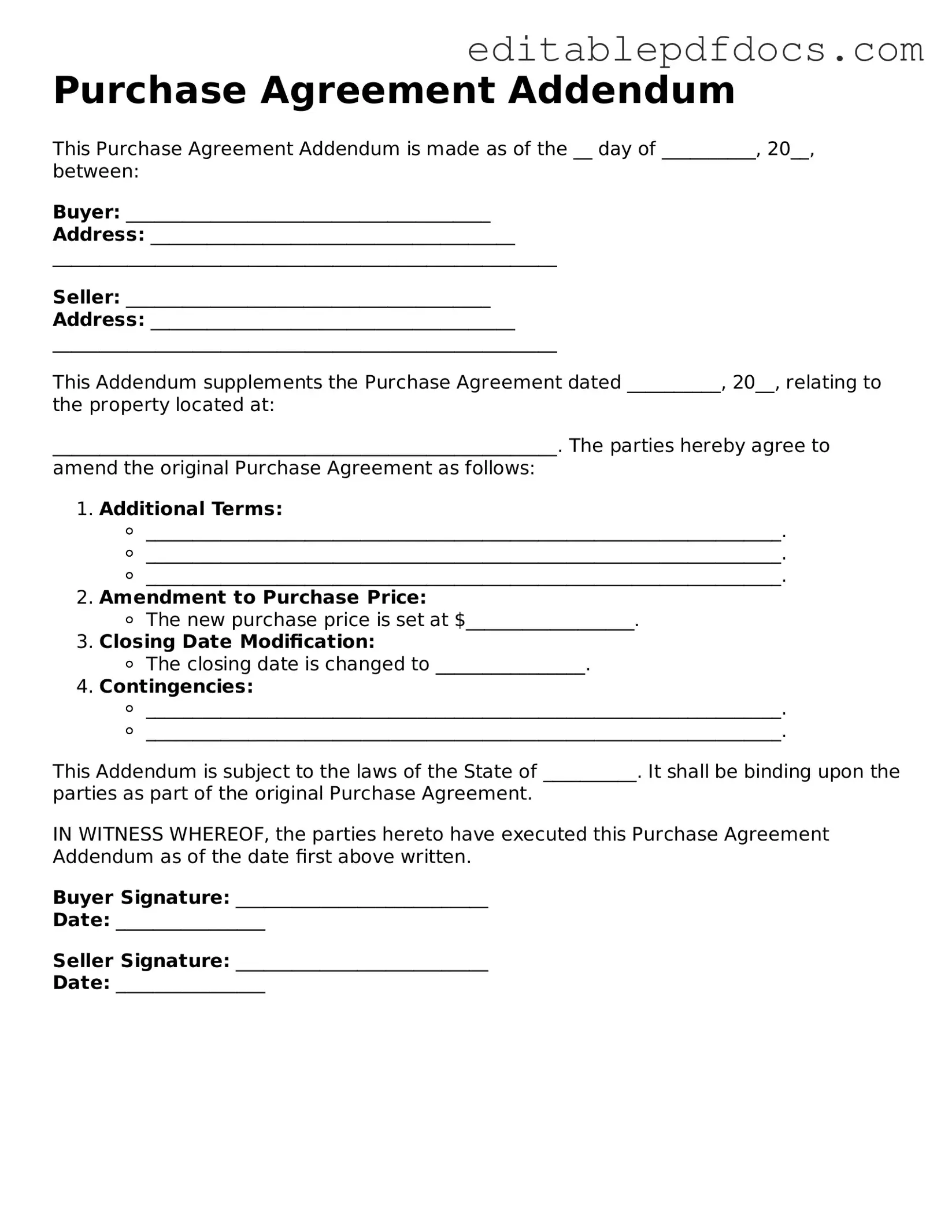Filling out the Purchase Agreement Addendum form can be a straightforward process, but several common mistakes can lead to complications. One frequent error is neglecting to include all necessary parties. When buyers or sellers forget to list all individuals involved, it can create confusion and potentially invalidate the agreement.
Another common mistake is failing to specify the terms clearly. Ambiguities in the terms can lead to misunderstandings later on. It's essential to articulate details such as payment amounts, deadlines, and conditions explicitly. Vague language can cause disputes, so clarity is key.
Some individuals overlook the importance of dates. Missing or incorrect dates can derail the entire transaction. It’s crucial to ensure that all deadlines for contingencies, inspections, and closings are accurate and clearly stated.
Additionally, many people forget to review the addendum in conjunction with the original purchase agreement. The addendum should align with the initial terms. Discrepancies between the two documents can create legal issues and may require further negotiation.
Another mistake involves not including all relevant documents. Supporting documents, such as inspection reports or disclosures, should accompany the addendum. Omitting these can lead to delays or complications in the closing process.
People often fail to sign the addendum properly. Signatures should be clear and dated. An unsigned or improperly signed document may not hold up in legal situations, rendering it unenforceable.
In some cases, individuals do not seek legal advice before submitting the form. Professional guidance can help identify potential pitfalls and ensure that the addendum meets all legal requirements. Skipping this step can lead to costly mistakes.
Lastly, neglecting to keep copies of the completed addendum is a common oversight. Having a record of all signed documents is essential for future reference. Without copies, individuals may find themselves without proof of the agreed-upon terms.
